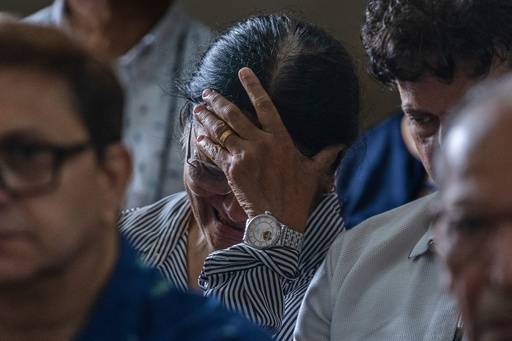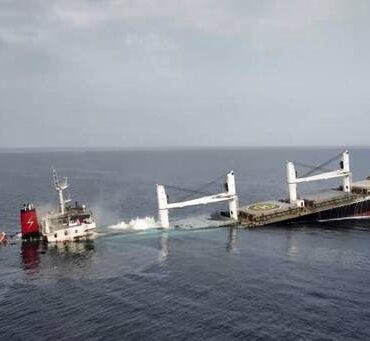Air India plane’s fuel ‘cut off’ before crash, probe finds

NEW DELHI—Fuel control switches for the engines of an Air India flight that crashed last month were moved from the “run” to the “cutoff” position moments before impact, starving both engines of fuel, a preliminary investigation report said early Saturday.
The report, issued by India’s Aircraft Accident Investigation Bureau, also indicated that both pilots were confused over the change to the switch setting, which caused a loss of engine thrust shortly after takeoff.
The Air India flight—a Boeing 787-8 Dreamliner—crashed on June 12 and killed at least 260 people, including 19 on the ground, in the northwestern city of Ahmedabad. Only one passenger survived the crash, which is one of India’s worst aviation disasters.
The plane was carrying 230 passengers—169 Indians, 53 British, seven Portuguese and a Canadian—along with 12 crew members.
According to the report, the flight lasted around 30 seconds between takeoff and crash. It said that once the aircraft achieved its top recorded speed, “the Engine 1 and Engine 2 fuel cutoff switches transitioned from RUN to CUTOFF position one after another” within a second. The report did not say how the switches could have flipped to the cutoff position during the flight.
‘Mayday’
The movement of the fuel control switches allow and cut fuel flow to the plane’s engines.
The switches were flipped back into the run position, the report said, but the plane could not gain power quickly enough to stop its descent after the aircraft had begun to lose altitude.
“One of the pilots transmitted “‘MAYDAY MAYDAY MAYDAY,’” the report said.
It also indicated confusion in the cockpit moments before the crash.
In the flight’s final moment, one pilot was heard on the cockpit voice recorder asking the other why he cut off the fuel. “The other pilot responded that he did not do so,” the report said.
The plane’s black boxes—combined cockpit voice recorders and flight data recorders—were recovered in the days following the crash and later downloaded in India.
Indian authorities had also ordered deeper checks of Air India’s entire fleet of Boeing 787 Dreamliner to prevent future incidents. Air India has 33 Dreamliners in its fleet.
June 12’s Air India crash involved a 12-year-old Boeing 787. Boeing planes have been plagued by safety issues on other types of aircraft.
According to experts, there are currently around 1,200 of the 787 Dreamliner aircraft worldwide and this was the first deadly crash in 16 years of operation.
Settlement
Indian conglomerate Tata Sons took over Air India in 2022, returning the debt-saddled national carrier to private ownership after decades of government control. Since the takeover, Air India has ordered hundreds of new planes, redesigned its branding and livery and absorbed smaller airlines that Tata held stakes in.
In a separate development, Boeing reached a settlement Friday with a Canadian man whose wife and three children were killed in a deadly 2019 crash in Ethiopia, averting the first trial connected to the devastating event that led to a worldwide grounding of Max jets.
The jury trial at Chicago’s federal court had been set to start Monday to determine damages for Paul Njoroge of Canada. His family was heading to their native Kenya in March 2019 aboard Ethiopian Airlines Flight 302 when it malfunctioned and plummeted to the ground. The wreck killed all 157 people on board.
Njoroge, 41, had planned to testify about how the crash affected his life.
“He’s got complicated grief and sorrow and his own emotional stress,” said Njoroge’s attorney, Robert Clifford. “He’s haunted by nightmares and the loss of his wife and children.”
Terms of the deal were not disclosed publicly.
Clifford said his client intended to seek “millions” in damages on behalf of his wife and children, but declined to publicly specify an amount ahead of the trial.

















